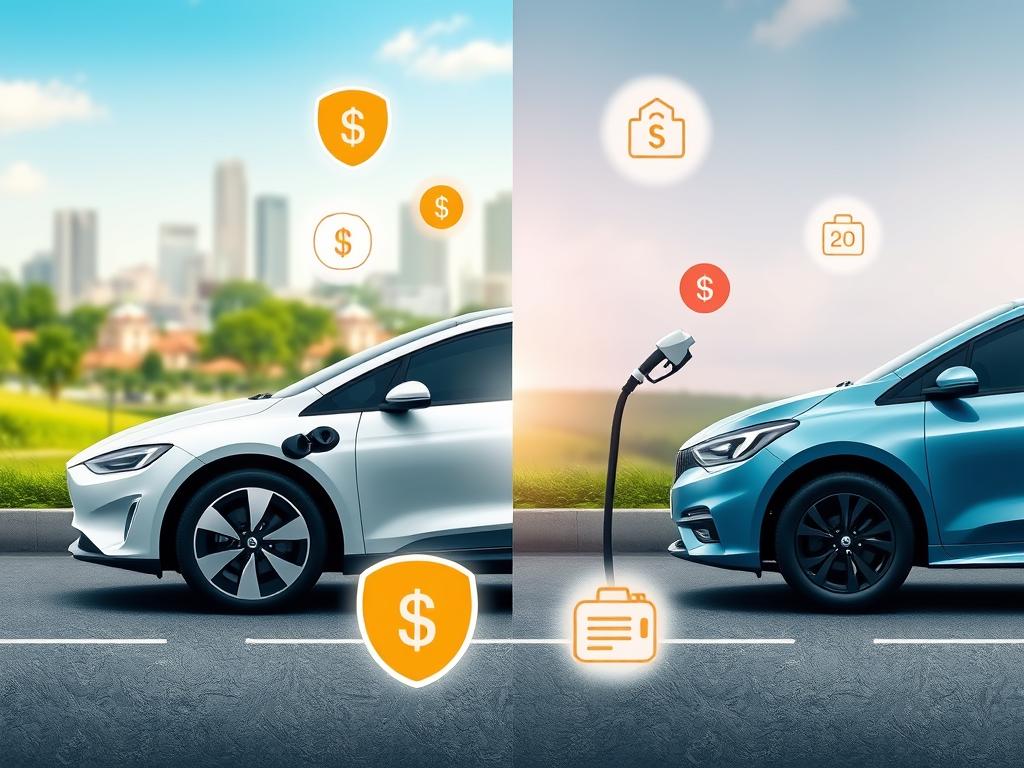The electric vehicle (EV) revolution is growing fast. People want to know: “How long do EV batteries last?” This question is key because battery life affects the cost of owning an EV. Luckily, modern EV batteries are proving to be very durable and long-lasting.
Lithium-ion batteries, the heart of EVs, have seen a huge drop in price over 30 years. This price cut, along with better battery tech, has boosted battery life and performance. Now, EV makers must guarantee their batteries for at least 8 years or 100,000 miles. Some places, like California, offer even more protection, up to 10 years or 150,000 miles.
Understanding Electric Vehicle Batteries and Their Lifespan Expectations
Electric vehicles (EVs) are changing the way we travel. Their success depends on the performance and long life of their rechargeable lithium-ion batteries. These batteries have advanced battery management systems (BMS) for high energy density, making them perfect for EVs.
Recent studies show EV batteries can last longer than expected. They found EV batteries last about a third longer in real-world driving than in lab tests. This is because sharp, short accelerations help batteries last longer, not faster aging as thought before.
The cost of lithium-ion batteries has dropped by about 90% in 15 years. Yet, they still make up a third of an EV’s price. This shows how far EV battery technology has come, improving performance, longevity, and cost.
Modern EV batteries can last at least 200,000 miles, with some going over 300,000 miles. Tesla says its batteries can last up to 500,000 miles. Scientists even think EV batteries could last up to 4 million miles.
The secret to long-lasting EV batteries is finding the right balance. Research shows using real-world driving data in battery management software helps. This way, EV makers can make batteries last longer and perform better.
Factors Affecting Battery Degradation and Performance
Electric vehicle (EV) batteries have a lifespan that depends on several factors. Knowing these can help keep your battery in top shape and your EV running long distances.
Temperature is a big factor in battery degradation. Hot weather can harm batteries, and very high temperatures can shorten their life. Luckily, new EVs have thermal management systems to keep the battery cool, reducing these effects.
The number of charging cycles also matters. Even with better charging tech, too many fast charges can still wear down the battery. Try to keep your charge between 20% and 80% to help your battery last longer.
Lastly, battery age is important. As your EV’s battery gets older, it won’t hold a charge as well. Smart charging habits can help your battery stay healthy and perform well for longer.
In summary, the main factors affecting EV battery degradation and performance are:
- Temperature effects, with warmer climates and extreme heat being detrimental
- The number of charging cycles, especially the impact of frequent fast charging
- Battery age and its influence on charge-holding capacity
By adjusting your charging habits, keeping the battery at the right temperature, and understanding age-related changes, you can make your EV’s battery last longer and perform better.
Electric Vehicle Batteries: Maintenance and Longevity Tips
When you own an electric vehicle (EV), taking care of your battery is key. Follow the maker’s advice and charge wisely to keep your EV battery healthy. This way, it will work well for many years.
Keeping your EV cool is important. Park it in a garage or a shaded spot to avoid heat damage. Also, try to avoid fast charging as much as you can. Use Level 1 or Level 2 chargers for daily charging.
- Keep the battery charge between 20% to 80% to make it last longer.
- Don’t charge it too much or let it get too low unless you have to.
- Drive at a steady pace to avoid wearing out the battery too fast.
- Update your EV’s software regularly to get the latest battery care features.
EVs with liquid-cooled batteries tend to last longer because they stay cooler. Check your owner’s manual for the best charging tips from the maker.
| Maintenance Tip | Benefit |
|---|---|
| Park in garages or shaded areas | Reduces battery degradation from extreme heat |
| Minimize use of DC fast charging | Lowers stress on the battery |
| Maintain 20-80% state of charge | Preserves long-term battery health |
| Keep software up to date | Enhances battery management and performance |
By sticking to these battery charging infrastructure, EV maintenance, optimal charging practices, and battery preservation tips, you’ll get the most out of your EV’s battery. Your EV will stay in top shape for many years.
Battery Replacement Costs and Second-Life Applications
As an electric vehicle (EV) owner, you might wonder about battery replacement costs. You might also think about using your battery for other things after it’s no longer in your car. The good news is that EV battery prices have fallen a lot. They went from over $400 per kilowatt-hour in 2012 to about $111 per kWh by 2024.
This drop in price makes replacing batteries cheaper. Most new EV owners get a strong warranty for at least 8 years or 100,000 miles. This means they don’t have to worry about battery costs for a long time.
The cost to replace a battery can vary a lot. It can be as low as $2,500 for a BMW i3 battery pack or up to $16,000 for bigger packs. But, it’s rare for EV owners to need a new battery. Only about 2.5% of EVs need a battery replacement.
After their first life in cars, EV batteries can be used for other things. They can store energy for homes with solar panels, sports arenas, and even for the power grid. By 2030, there could be 112-275 GWh of second-life batteries worldwide. California alone expects to have about 1 GWh of storage from retired EV batteries by 2027.
These second-life batteries can help lower electricity bills. They also make systems more reliable and help the environment. It’s a win-win for everyone.


